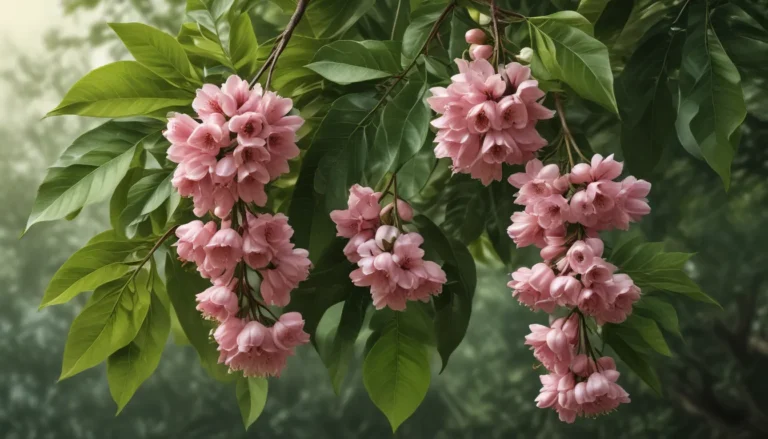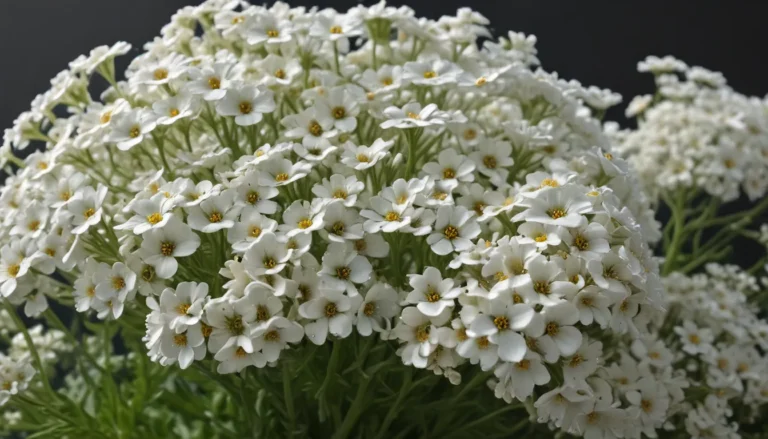The pictures we use in our articles might not show exactly what the words say. We choose these pictures to make you interested in reading more. The pictures work together with the words but don’t take their place. The words still tell you the important facts.
Arctostaphylos, commonly known as manzanita, is a captivating genus of plants that offers much more than meets the eye. With over 50 species, these plants belong to the Ericaceae family and play a vital role in various ecosystems. From their unique adaptations to their historical medicinal use, Arctostaphylos plants have a rich and intriguing story to tell.
The Diverse World of Arctostaphylos
Arctostaphylos boasts over 50 different species, each with its own distinct characteristics and habitats. These plants can be found in various locations worldwide, showcasing the incredible diversity within this genus.
The name "Arctostaphylos" itself holds a unique origin, stemming from Greek words meaning "bear bunch." This moniker reflects the plant's ecological interactions, particularly with bears that consume the edible berries found in clusters. It's fascinating how the naming of plants can provide insight into their interactions with wildlife.
Medicinal Marvels of Arctostaphylos
Arctostaphylos plants have a long history of medicinal use, with Native American tribes harnessing their healing properties for centuries. From treating urinary tract infections to digestive disorders, these plants have been valued for their medicinal benefits. Leaves were often brewed into teas or used topically for various ailments.
Survival in Fire-Prone Ecosystems
Some Arctostaphylos species have evolved remarkable adaptations to thrive in fire-prone ecosystems. With thick bark and underground burls, these plants can resprout after a fire, contributing to the ecosystem's regeneration and ensuring their own longevity.
Berry Benefits and Antioxidants
Arctostaphylos berries are not only delicious but also rich in antioxidants. These natural compounds help protect the body from free radicals, potentially reducing inflammation and boosting the immune system. The vibrant red berries offer more than just color—they pack a nutritional punch as well.
Adapting to Arid Environments
In arid environments, some Arctostaphylos species have developed deep root systems and leathery leaves to access and conserve water effectively. These unique adaptations allow them to thrive in challenging conditions by optimizing their water usage.
Pollinator Paradise
The beautiful flowers of Arctostaphylos attract a wide range of pollinators, including bees, butterflies, and hummingbirds. These pollinators play a crucial role in the reproductive success of the plants, ensuring the continued production of berries and the survival of the species.
Cultural Significance and Traditional Uses
Beyond their ecological importance, Arctostaphylos plants hold cultural significance in indigenous communities. They are used in traditional ceremonies, as a source of food and medicine, and even in crafting traditional items like baskets. Their presence in cultural practices highlights their importance beyond their physical attributes.
A Landscaper’s Dream
Due to their attractive features, such as unique bark and foliage, Arctostaphylos plants are popular choices for landscaping projects. Whether in gardens or ornamental settings, these plants offer both aesthetic appeal and ecological benefits.
Growth Forms Galore
Arctostaphylos plants exhibit a wide range of growth forms, from small shrubs to tall trees. This diversity allows them to occupy different niches within their ecosystems, contributing to overall biodiversity and habitat health.
Coastal Champions
Many Arctostaphylos species thrive in coastal regions, enduring salt spray and strong winds. Their ability to tolerate these harsh conditions makes them essential components of coastal ecosystems, providing habitat and stabilizing the soil.
Thriving in Nutrient-Poor Soils
Some Arctostaphylos species have evolved specialized root structures to efficiently extract nutrients from poor soils. This adaptation allows them to thrive in environments where other plants may struggle, showcasing their resilience and adaptability.
Wildlife Wonderland
The berries of Arctostaphylos plants are a valuable food source for wildlife, including birds, bears, and small mammals. By offering nourishment, these plants contribute to the overall biodiversity and ecological balance of their habitats.
In conclusion, Arctostaphylos plants are a treasure trove of surprises, from their unique adaptations to their ecological significance. Whether used in traditional medicine or appreciated for their ornamental qualities, these plants continue to captivate scientists and nature lovers alike.
FAQs
Q: What are some common uses of Arctostaphylos?
A: Arctostaphylos is commonly used for erosion control, landscaping, and ornamental purposes. Some cultures also utilize it for traditional medicine.
Q: Can humans eat Arctostaphylos berries?
A: Yes, some species produce edible berries that are enjoyed by both humans and wildlife. However, caution should be exercised as not all berries are safe for consumption.
Q: Where can Arctostaphylos be found?
A: Arctostaphylos can be found across North America, Europe, and Asia, thriving in diverse habitats.
Q: Are all Arctostaphylos species fire-adapted?
A: Not all species possess fire-adapted characteristics, with some more resilient to wildfires than others.
Q: Are there conservation concerns for Arctostaphylos?
A: Yes, some species face threats from habitat destruction and invasive species, highlighting the importance of conservation efforts.
Explore the wonders of Arctostaphylos and other native plants to uncover the hidden marvels of the natural world. Dive into the beauty and complexity of these plants, and let their stories inspire your curiosity and appreciation for the wonders of nature.






